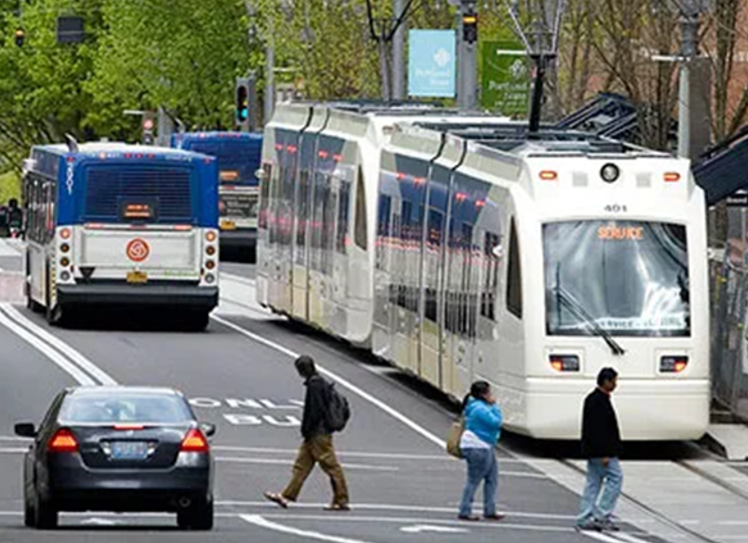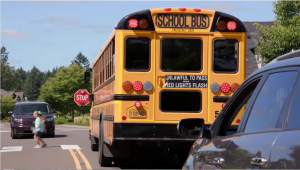Lesson Five: Buses (6.5)
 Buses
Buses
School Buses
There are specific laws that drivers must follow when interacting with school buses. These laws are designed to protect the school bus driver, the passengers, and other roadway users.
Buses are equipped with lights that communicate important information to drivers, pedestrians, and other roadway users. The bus flashes their amber lights to indicate that they are preparing to stop. These lights turn on within approximately 100-300 feet of their stopping location.
When the bus is stopped, red lights will flash. Drivers are required to stop when the red lights are flashing. If you are on a divided highway with two sides separated by an unpaved median strip or barrier, you must stop only if you are on the same side as the bus. You cannot pass a school bus when the red lights are flashing – even when the school bus is coming from the other direction on a four-lane highway with a painted center median or shared turn lane. All vehicles must stop and remain stopped as long as the red lights are flashing.
Worker Buses
Flashing amber and red lights are permitted on worker transport buses. If the bus turns on flashing amber or red lights, you must treat these lights the same as you would a school bus.

Public Transit Buses
Public Transit buses make frequent stops. In many areas the buses have specially designated bus lanes that other vehicles are not allowed to occupy.
When a transit bus is attempting to re-enter traffic, using a turn signal with or without the yield sign, the law requires that you yield the right of way to the bus and allow it to enter the roadway.
Bus drivers are professionally trained. Even with specialized training, errors can occur.
Apply SIM and use special care when interacting with buses as they stop frequently to load and unload passengers and reenter traffic.
Essential Question
-
How do you interact lawfully, safely, and courteously with buses?
